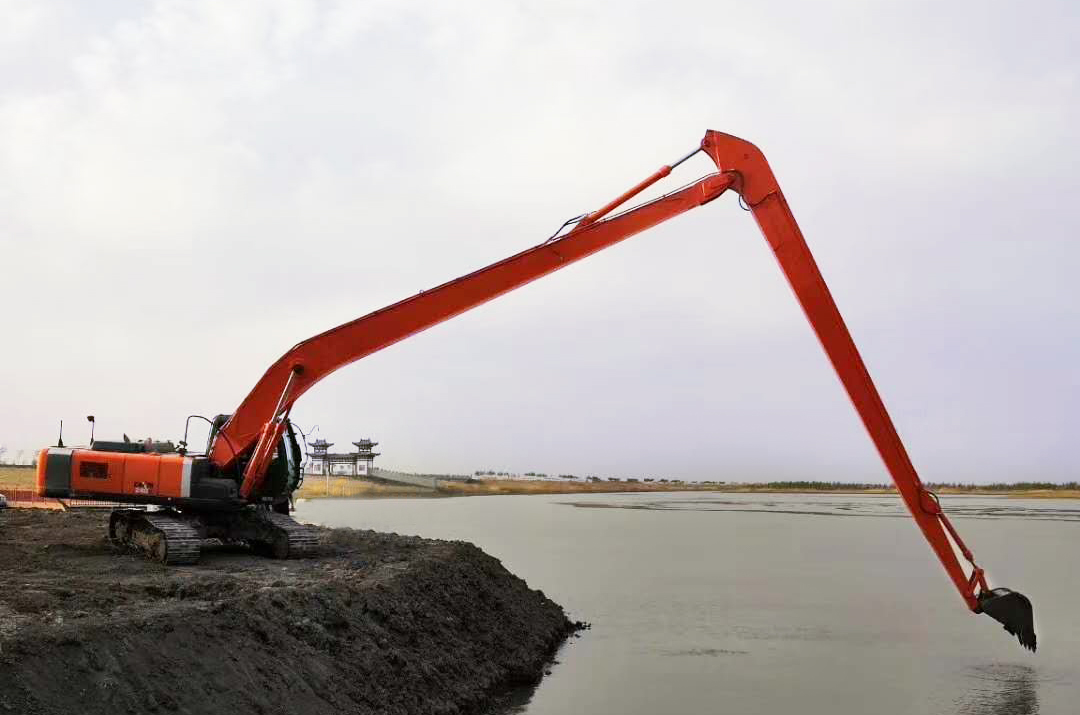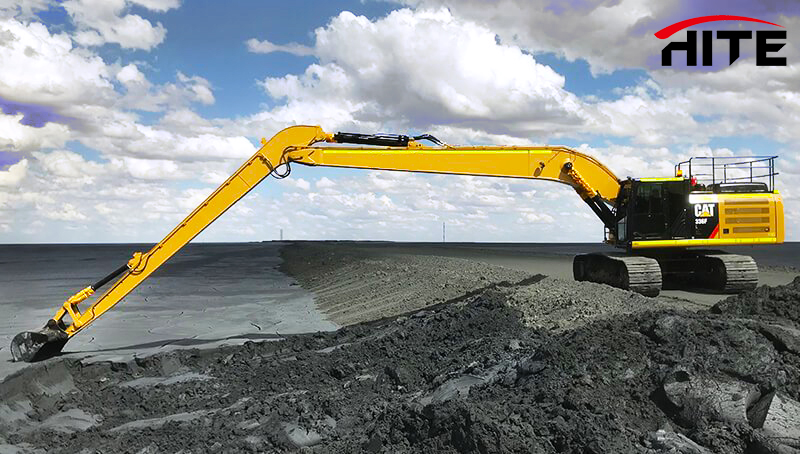When it comes to reshaping the Earth’s surface, humans have mastered the art of engineering. From towering skyscrapers to intricate tunnels, our feats of construction are awe-inspiring. However, one area that often goes unnoticed is the remarkable technology behind river dredging. In this article, we delve into the advantages of excavator long reach fronts in river dredging operations, showcasing how these engineering marvels are transforming waterways for the better.
-
The Essence of River Dredging
River dredging is a critical process that involves removing sediment, debris, and other contaminants from the riverbed. This action restores the waterway’s navigability, prevents flooding, enhances water quality, and supports aquatic ecosystems. Traditionally, this task was accomplished using manual labor or cumbersome equipment, resulting in inefficiency and time-consuming efforts.
-
Introducing Excavator Long Reach Fronts
Enter excavator long reach fronts, a game-changing innovation that has revolutionized river dredging operations. These specially designed attachments extend the arm and bucket of an excavator, dramatically increasing its reach and effectiveness. By equipping an excavator with a long reach front, operators can efficiently extract sediment from the riverbed, maintain water flow, and restore the ecosystem’s balance.
-
Unparalleled Reach and Precision
One of the most remarkable advantages of excavator long reach fronts is their unparalleled reach and precision. Traditional dredging methods often required heavy machinery to be positioned directly above the dredging site. This approach posed challenges in accessing hard-to-reach areas, particularly in confined or sensitive environments. With a long reach front, excavators can effortlessly reach deep into the river, tackling sediment buildup even in areas that were previously inaccessible.
-
Minimized Environmental Impact
In river dredging operations, minimizing environmental impact is of paramount importance. Excavator long reach fronts excel in this aspect by reducing the need for extensive ground disturbance. The ability to work from a distance means less disruption to riverbanks, vegetation, and aquatic habitats. This targeted approach not only preserves the natural landscape but also safeguards the delicate balance of the ecosystem.
-
Enhanced Efficiency and Cost Savings
Time is of the essence in river dredging, especially in flood prevention scenarios. Excavator long reach fronts offer a significant boost in efficiency by streamlining the dredging process. Operators can complete tasks in less time, reducing labor costs and equipment usage. Moreover, the precise nature of long reach fronts minimizes the risk of over-dredging, ensuring that only the necessary amount of sediment is removed.
-
Versatility in Dredging Applications
Excavator long reach fronts are adaptable tools that excel in various dredging applications. Whether it’s removing accumulated silt, restoring navigation channels, or rejuvenating aquatic habitats, these attachments can handle it all. This versatility makes them an invaluable asset for river management projects, catering to the diverse needs of environmental agencies, construction firms, and local communities.
-
Safety and Operator Comfort
The safety and well-being of operators are paramount in any construction endeavor. Excavator long reach fronts prioritize operator comfort and safety by allowing them to maintain a safe distance from potentially hazardous dredging sites. This remote operation minimizes exposure to dust, noise, and unstable terrain, ensuring a safer working environment for all involved.
-
Excavator Long Reach Fronts Technological Advancements
Advancements in technology have further augmented the capabilities of excavator long reach fronts. Remote control systems and GPS guidance enable operators to precisely navigate the dredging process, reducing the likelihood of errors. Additionally, real-time data collection provides insights into dredging progress, sediment composition, and water quality, aiding in informed decision-making and adaptive management strategies.
Conclusion
In the realm of river dredging, excavator long reach fronts have emerged as a beacon of innovation and efficiency. These remarkable attachments offer unparalleled reach, precision, and adaptability, transforming the way we manage and restore our waterways. With their minimized environmental impact, enhanced efficiency, and versatile applications, excavator long reach fronts are a testament to human ingenuity and our commitment to shaping the world around us for the better. As we continue to unlock the potential of these engineering marvels, we can look forward to healthier, more resilient rivers and the preservation of our invaluable aquatic ecosystems.
-
Restoring Ecosystem Balance
Beyond their practical advantages, excavator long reach fronts play a crucial role in restoring the delicate balance of aquatic ecosystems. Sediment buildup in rivers can lead to stagnant water, decreased oxygen levels, and disruptions in the natural flow. By effectively removing excess sediment, long reach fronts help rejuvenate waterways, promoting the growth of aquatic plants, supporting fish populations, and providing habitats for various aquatic species.
-
Sustainable River Management
The advantages of excavator long reach fronts extend to the realm of sustainable river management. As societies become increasingly conscious of environmental impacts, the need for eco-friendly and efficient solutions becomes paramount. Long reach fronts align perfectly with these goals, reducing the carbon footprint of dredging operations by optimizing resource usage and minimizing disturbance. This sustainability aspect ensures that our waterways can continue to thrive while meeting the needs of growing communities.
-
Real-Life Success Stories
Numerous real-life success stories attest to the transformative power of excavator long reach fronts in river dredging. For instance, the restoration of the Kissimmee River in Florida stands as a shining example. By employing long reach fronts, engineers efficiently removed years’ worth of sediment buildup, allowing the river to return to its natural course and reestablishing vital wetland habitats.
In Europe, the Danube River Basin has benefited from the application of long reach fronts to maintain navigational channels and mitigate flood risks. This proactive approach not only safeguards communities from potential disasters but also ensures the continued prosperity of the surrounding environment.
-
The Path Forward
As we venture further into the 21st century, the role of excavator long reach fronts in river dredging is poised to expand even further. Ongoing advancements in materials, remote sensing technologies, and automation will likely enhance the capabilities of these engineering marvels. The integration of artificial intelligence and machine learning could enable excavators to make real-time decisions based on sediment composition, water flow, and environmental conditions, optimizing the dredging process for maximum efficiency and minimal impact.
Furthermore, international collaborations and knowledge-sharing will play a pivotal role in promoting the adoption of excavator long reach fronts across the globe. As different regions face unique challenges related to river management and ecosystem restoration, a collective effort will lead to the development of innovative solutions tailored to specific needs.
Conclusion
In the intricate tapestry of Earth’s ecosystems, rivers are vital threads that connect landscapes and sustain life. The advantages of excavator long reach fronts in river dredging operations shine as a testament to human ingenuity and determination to restore and protect these crucial waterways. Their unparalleled reach, precision, and efficiency are shaping the future of river management, enabling us to strike a harmonious balance between human progress and environmental preservation.
As we continue to harness the potential of excavator long reach fronts and integrate cutting-edge technologies, we embark on a journey toward a more sustainable and resilient world. With each dredged riverbed and restored aquatic habitat, we reaffirm our commitment to safeguarding the natural world and ensuring that our waterways remain vibrant, thriving, and interconnected for generations to come.








Leave A Comment